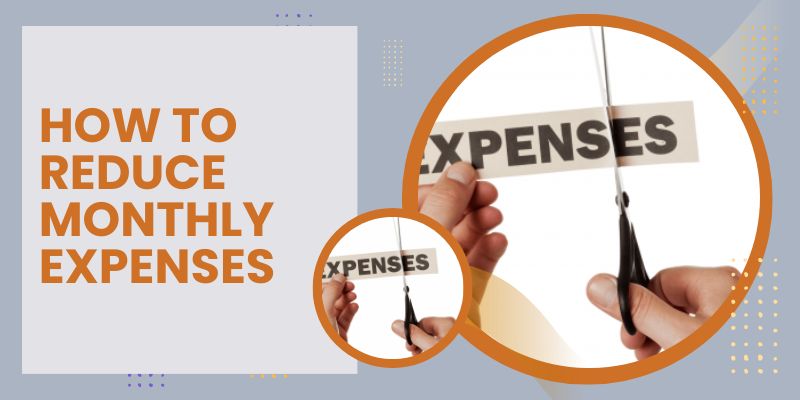Cutting monthly spending is one of the easiest ways to save money, whether you want to pay off debt or put money aside for a major purchase. But to save a little money each month, you don’t have to make major life changes. You should be able to save money and still leading your existing lifestyle by looking for simple methods to alter your spending patterns.
Start by taking a look at your ongoing costs and determining what you definitely require versus what you can live without. seao.info will provide for you 6 How to reduce monthly expenses.
6 Best How to Reduce Monthly Expenses

1. Start Tracking Your Spending Habits
Knowing where the money is going is the first step in lowering spending. Keeping track of your spending for 30 or 60 days will undoubtedly open your eyes. Who knew that much money was being used to support your Egg McMuffin and Kindle habits?
“You might be shocked at How to reduce monthly expenses, but this gives you a good chance to see where adjustments are required moving forward,” Barker said.
Writing down each item as you incur it is the traditional way to keep track of your spending. Many people who want to minimize costs get stopped in their tracks by that onerous task. Fortunately, technology can do our “writing down” for us because we live in the twenty-first century.
Check your statements if you use your debit or credit card for everything.
Examine what you purchased and decide what was necessary versus what were “wants.”
Printing out the statement and highlighting various categories of spending with different colored highlighters or pens is one approach to make things more clear. Or list them with headings for “needs” and “wants”
On debit card accounts, some financial institutions even include a pie chart or graph with spending categories that illustrates where your money went.
Get receipts if you decide to pay with cash.
2. Cancel Unnecessary or Unused Subscriptions

For internet, cell phones, periodicals, streaming services, cable TV, weight reduction programs, you name it, How to reduce monthly expenses. Even though the money is taken out of your account each month once you set one up, you probably don’t give it much thought.
It’s time to look closely right now. Think about it:
How often should I use this?
Is this really what I need?
Am I able to live without this?
Go through your email and unsubscribe from any newsletters or ongoing adverts that come from that source after canceling the subscription.
Don’t pass on canceling a subscription because they make it difficult or it appears like a minor expense that won’t be worth the hassle. Cutting costs should be viewed as a death by a thousand cuts rather than a single devastating blow.
Remember to pay your cell phone and cable bills as well. Can you decrease your current plan or switch to a less expensive one with another provider? Think into less expensive TV alternatives, but be careful not to oversubscribe to streaming services.
3. Reduce Electricity Use

Your home has to be heated or cooled, and you need electricity for the lights and other appliances. However, there are numerous strategies to reduce your utility costs.
The typical home budget includes 12% of its expenses on electricity.
How to reduce monthly expenses Some quick actions you can take to reduce those costs are as follows: Turn down the thermostat and lower the temperature on your water heater. Don’t leave the computer running. Run the dishwasher only when there is a full load. Hang the laundry to dry. Look around to discover if any utility providers, especially for fuel, have lower rates.
4. Prioritize Sustainability
Some of the most effective techniques to How to reduce monthly expenses will also lessen the environmental impact you have.
The simplest – and perhaps hardest – course of action would be to go to thrift stores and buy used goods, including clothing.
Tossing off auto payments and insurance in favor of using public transportation is another, admittedly challenging, option to cut costs and benefit the environment. This includes traveling far from home for work or shopping trips by bicycle and then stowing it away on the bus or subway when you arrive at the location of public transit.
Both the environment and your wallet will benefit from installing energy-efficient light bulbs, water-efficient appliances, and shutting off the water while you wash your teeth.
5. Eat at Home
Meals prepared and consumed at home can be quite How to reduce monthly expenses.
Making a weekly meal plan can make it simple. Plan your meals for the coming week and then stick to them.
Even for those who don’t consider themselves to be cooks, the internet provides a seemingly limitless array of culinary and recipe advice.
Make something on the weekend that will serve as numerous meals if you don’t have time to prepare meals during the workweek, such as a casserole, chili, or a chicken dish. All you have to do is grab it and go after portioning it out into daily meal portions. Make a hearty soup, chili, or casserole, portion it into one-meal containers, and freeze it for longer-term convenience. This will give you easy meals for hectic days in the future.
When you stop using the drive-through every night, your purchase of six one-portion containers will quickly pay for itself.
6. Put a Freeze on Your Credit Cards
How to reduce monthly expenses, Credit card debt is a significant barrier to cost-cutting. Using a credit card when you don’t have the cash on hand for anything is simple, but the balances may add up quickly, especially if the interest rate is high.
Freezing your credit cards is a smart approach to reduce monthly costs if you have credit card debt.
You could actually freeze your cards; some financial professionals advise doing so by placing them in a water container and freezing them. You need to defrost it before using it.
If you want to take more formal action, you can temporarily halt credit cards by visiting the website or app of your issuer and freezing it, which prevents purchases. No further charges will be permitted by the issuer. You must still make monthly payments, interest will continue to accrue, and the recurring payments you’ve set up will still be executed.
You are free to “thaw out” the cards whenever you want and there is no penalty.


